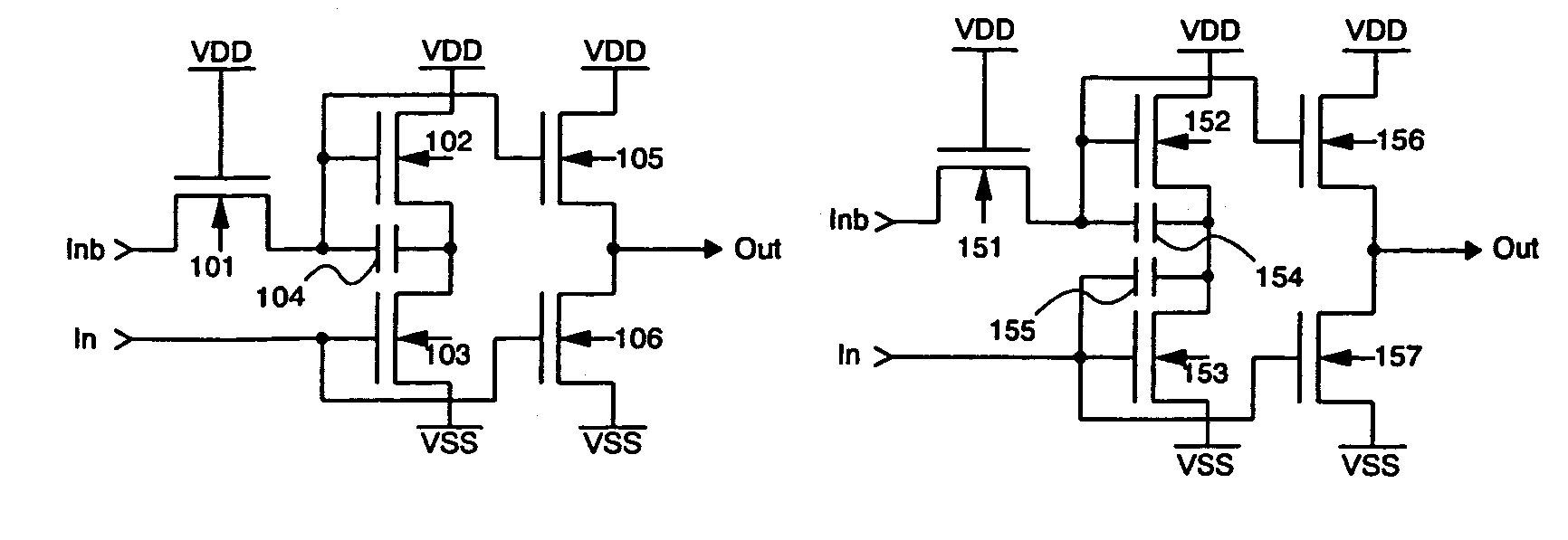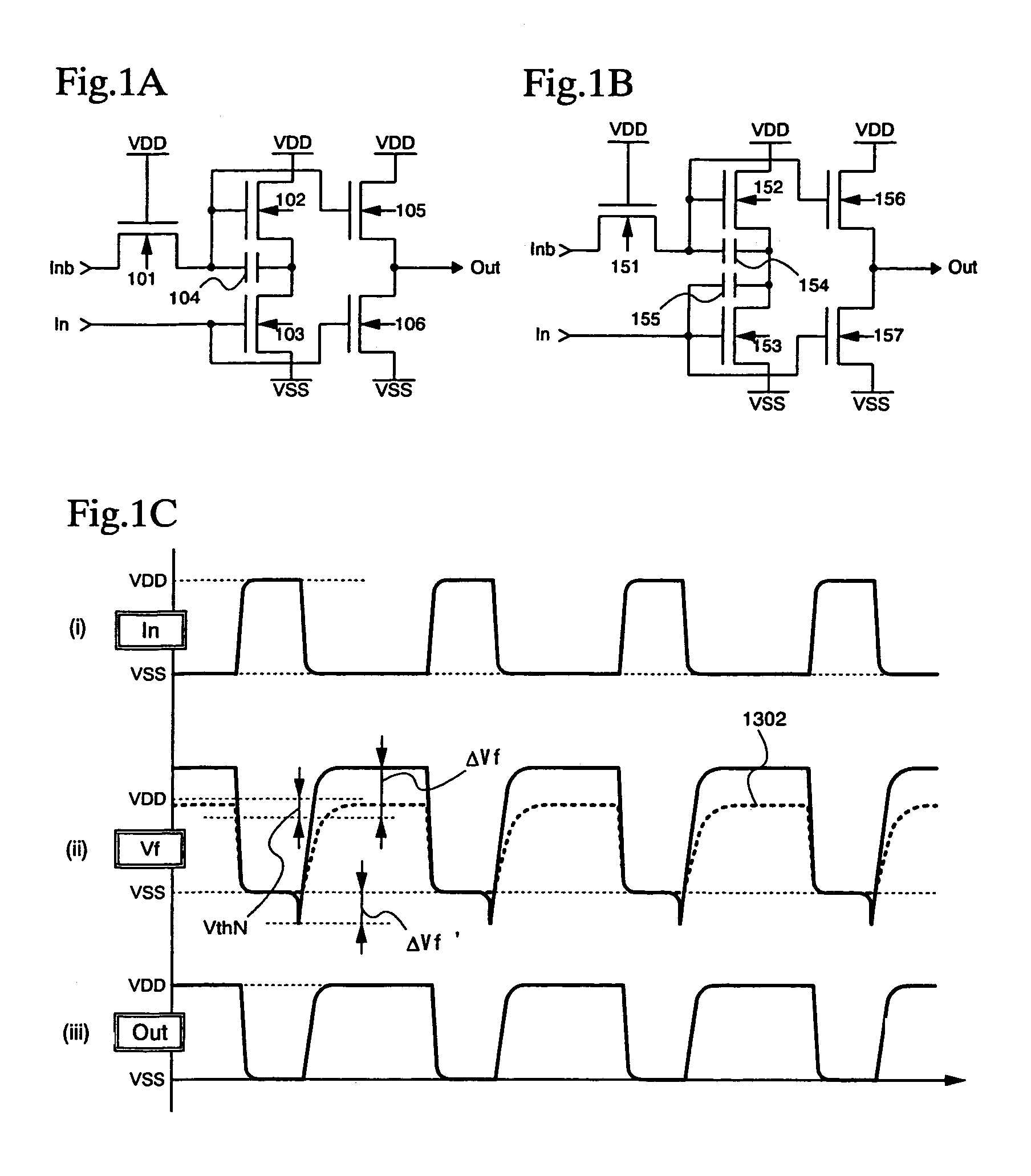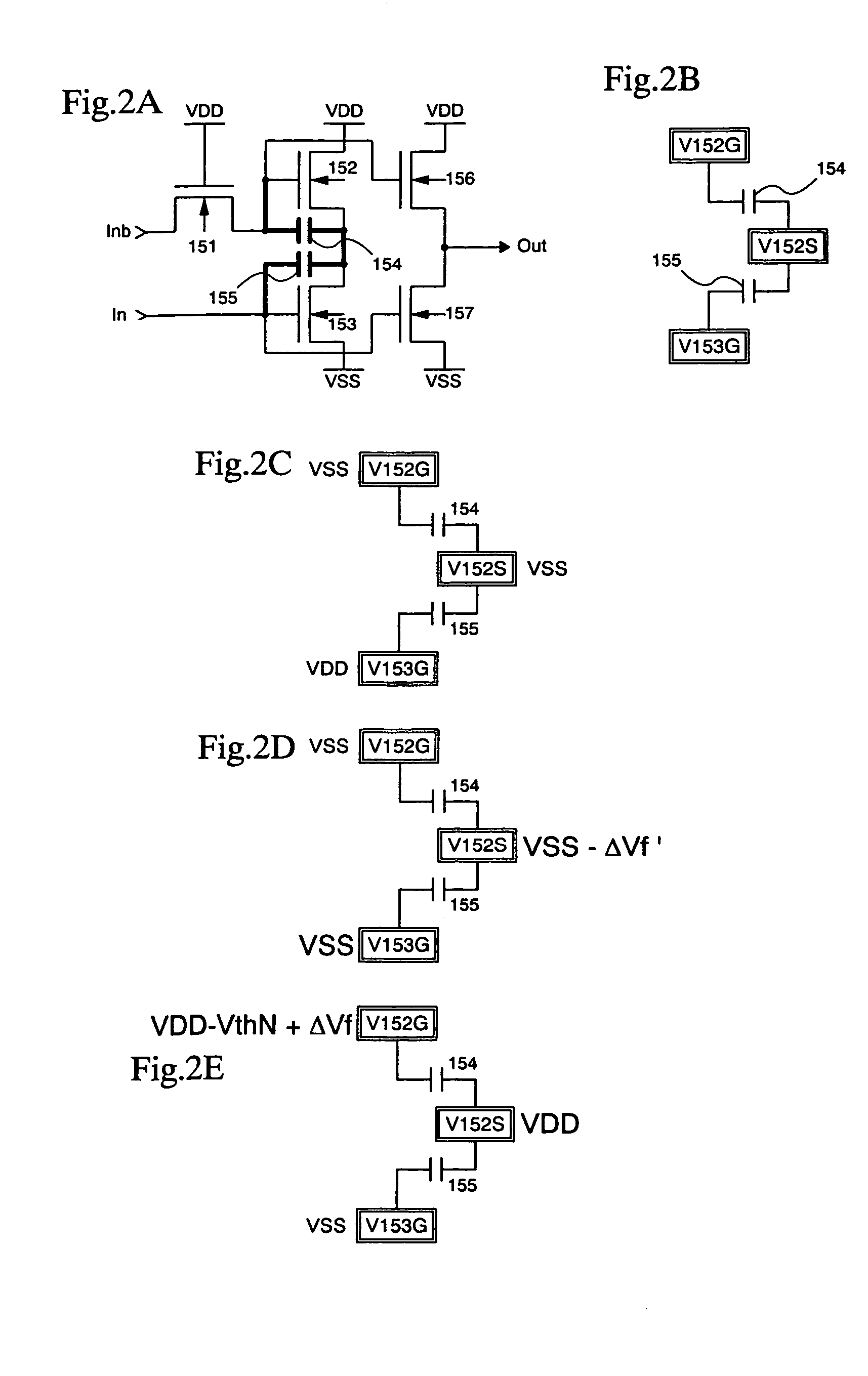Semiconductor device
a technology of semiconductors and devices, applied in the direction of logic circuit coupling/interface arrangements, pulse techniques, instruments, etc., can solve the problems of large load due to pixels, inability of the inverter itself to supply a sufficient amount of electric, and extreme complexity of the process, so as to reduce the number of buffers and the like, the effect of increasing the load driving capability
- Summary
- Abstract
- Description
- Claims
- Application Information
AI Technical Summary
Benefits of technology
Problems solved by technology
Method used
Image
Examples
embodiment 1
[0154]In the circuits shown in FIGS. 1A and 1B and explained in the Embodiment Mode, the role of placing the gate electrode of the TFT 102 in a floating state is accomplished by only the TFT 101. There is the fact discussed above that the gate electrode of the TFT 102 is placed in a floating state when the electric potential of the gate electrode of the TFT 102 becomes (VDD−VthN). If the H level of the input signal is not satisfy (VDD−VthN), the TFT 101 does not turn off, and therefore the gate electrode of the TFT 102 is not placed in a floating state, and accordingly the boot strap does not work.
[0155]The circuit shown in FIG. 9A is used in the above case. A difference between the circuits shown in FIG. 9A and in FIG. 1A is that two TFTs, a TFT 901 and a TFT 902, are used in order to place a gate electrode of a TFT 903 in a floating state. The above stated condition is considered with the circuit of FIG. 9A. The voltage amplitude of an input signal is VDD0(Hi) to VSS(Lo), and the ...
embodiment 2
[0160]This embodiment gives a description on a method of manufacturing TFTs for driving circuit provided in a pixel portion and in the periphery of the pixel potion formed on the same substrate. Note that the processes of manufacturing of a liquid crystal device is described as an example here, as mentioned above, there is no particular limitation on the liquid crystal display device.
[0161]First, as shown in FIG. 7A, a base film 5002 is formed from an insulating film such as a silicon oxide film, a silicon nitride film, and a silicon oxynitride film on a glass substrate 5001. The substrate 5001 is formed of barium borosilicate glass typical example of which is Corning #7059 glass or Corning #1737 glass (product of Corning Incorporated), or of aluminoborosilicate glass. The base film 5002 is, for example, (not shown) a laminate of a silicon oxynitride film that is formed from SiH4, NH3, and N2O by plasma CVD to a thickness of 10 to 200 nm (preferably 50 to 100 nm) and a silicon oxyni...
embodiment 3
[0192]An example of manufacturing a display device which has the circuit as shown in the Embodiment Mode and Embodiment 1 is discussed in Embodiment 3.
[0193]A schematic diagram of the display device is shown in FIG. 10A. A pixel portion 1001 is placed in a center portion of a substrate 1000. A source signal line driver circuit 1002 for controlling source signal lines, and gate signal line driver circuits 1007 for controlling gate signal lines are formed in the periphery of the pixel portion 1001. Although the gate signal line driver circuits 1007 are placed symmetrically on both side of the pixel portion 1001, there may be a gate signal driver circuit formed on only one side thereof.
[0194]Signals input from the outside for driving the source signal line driver circuit 1002 and the gate signal line driver circuits 1007 are input through an FPC 1010. The signals input from the FPC 1010 have small voltage amplitudes, and therefore undergo transformation of the voltage amplitudes by lev...
PUM
 Login to View More
Login to View More Abstract
Description
Claims
Application Information
 Login to View More
Login to View More - R&D
- Intellectual Property
- Life Sciences
- Materials
- Tech Scout
- Unparalleled Data Quality
- Higher Quality Content
- 60% Fewer Hallucinations
Browse by: Latest US Patents, China's latest patents, Technical Efficacy Thesaurus, Application Domain, Technology Topic, Popular Technical Reports.
© 2025 PatSnap. All rights reserved.Legal|Privacy policy|Modern Slavery Act Transparency Statement|Sitemap|About US| Contact US: help@patsnap.com



